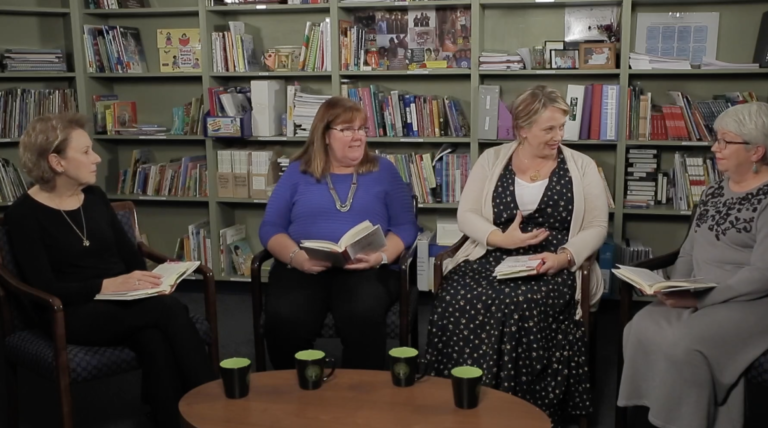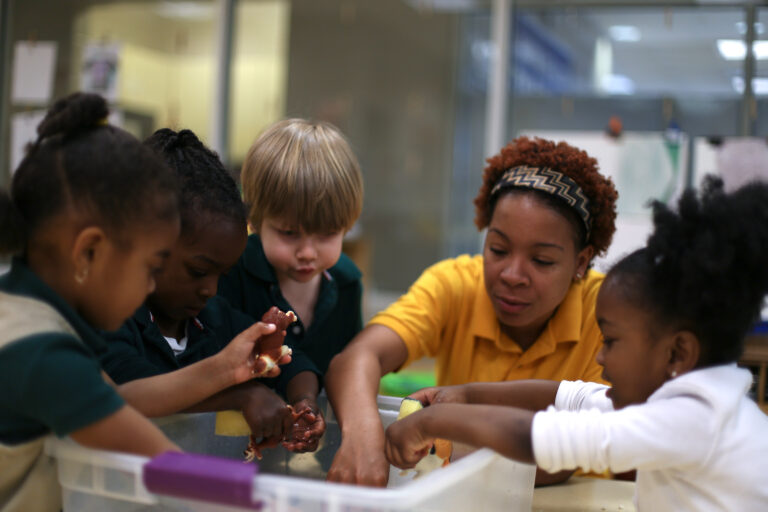The more that you read, the more things you will know. The more that you learn, the more places you’ll go.” – Dr. Seuss
Dr. Seuss clearly knew a thing or two about the importance of reading. A love for reading and learning is one of the best gifts a teacher can give to children. Reading gives children the opportunity to visit far away places, conduct daring rescues, and go on amazing adventures. That’s why it’s all the more important that, as teachers, we make sure story time isn’t a chore, but a golden learning opportunity. To make story time a great learning experience – as well as a fun experience – you’ll need to do a bit more than read with enthusiasm. Don’t get us wrong, reading with enthusiasm IS important. Who likes listening to somebody read in a monotone voice? Certainly not preschoolers or Pre-K students.
Every time we open the pages of a book with our students, it’s a chance to broaden their minds and prepare them for all learning. So how do you elevate story time with your students? Here are some of our quick tips:
Quick Tip #1: Captivate Your Children’s Interests Before Starting Your Read Aloud
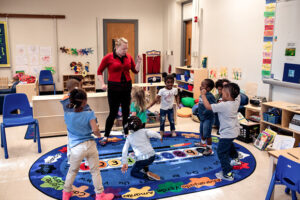 It’s vital to capture your students’ interests even BEFORE you open the book. What’s our secret? Before beginning story time, engage students and get them ready to focus on the story in a creative way. We love using songs, rhymes or fingerplays! It’s a great way to get their attention and maybe even get some of those wiggles out before story time.
It’s vital to capture your students’ interests even BEFORE you open the book. What’s our secret? Before beginning story time, engage students and get them ready to focus on the story in a creative way. We love using songs, rhymes or fingerplays! It’s a great way to get their attention and maybe even get some of those wiggles out before story time.
Quick Tip #2: Use Think-Alouds
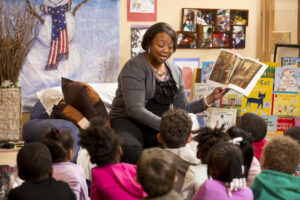 To help children understand important parts of the story, try using think-alouds. You can say phrases like, “I wonder why…” or “He must feel…” to help them along the way. Ever wondered if students are actually comprehending the story? This is a great opportunity to steer them in the right direction as you model critical thinking. When you read a story for the first time it’s best to focus on the events that occur, while the second read is great for discussing the emotions each character is feeling. When it comes time for the third read, let the children tell the story by encouraging them to explain the key events and characters’ feelings in their own words.
To help children understand important parts of the story, try using think-alouds. You can say phrases like, “I wonder why…” or “He must feel…” to help them along the way. Ever wondered if students are actually comprehending the story? This is a great opportunity to steer them in the right direction as you model critical thinking. When you read a story for the first time it’s best to focus on the events that occur, while the second read is great for discussing the emotions each character is feeling. When it comes time for the third read, let the children tell the story by encouraging them to explain the key events and characters’ feelings in their own words.
Quick Tip #3: “PAT” the Vocabulary
To help teach your students new vocabulary words, all you have to do is “PAT” the vocabulary. Point. Act. Tell. Point to illustrations in the book that match the vocabulary. Act out words whose meaning can be shown through actions or facial expressions. Tell the meaning of words with child friendly definitions for children to understand the story. Every time you turn the page is an opportunity for your students to learn something new!
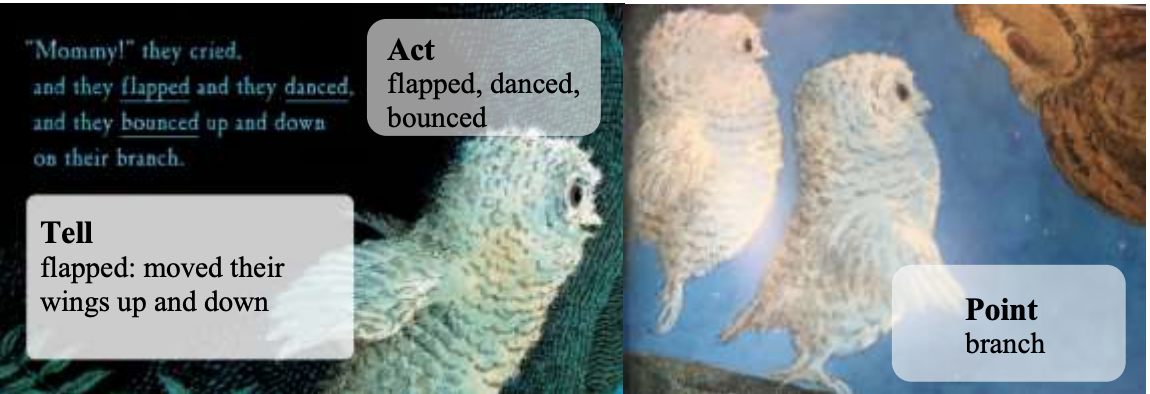
Quick Tip #4: Ask Open-Ended Questions
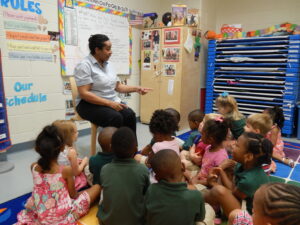 Once you’ve finished the read aloud, it’s time to ask the students a question! Try using open-ended questions starting with “how” or “why”. It’s important to mix some simple questions and ones that are more challenging. Simple questions give children the knowledge they need to answer challenging questions – or as we like to call them, developing questions. Developing questions will help lift language and encourage critical thinking. What happens if a child gives a random response to your questions? Don’t just brush past what they said. Acknowledge their response and help lead them toward thoughtful answers. You can reply with something simple like, “That sounds like fun! I’d love to hear more about that at recess. Right now I’m curious about this story….” and repeat the question.
Once you’ve finished the read aloud, it’s time to ask the students a question! Try using open-ended questions starting with “how” or “why”. It’s important to mix some simple questions and ones that are more challenging. Simple questions give children the knowledge they need to answer challenging questions – or as we like to call them, developing questions. Developing questions will help lift language and encourage critical thinking. What happens if a child gives a random response to your questions? Don’t just brush past what they said. Acknowledge their response and help lead them toward thoughtful answers. You can reply with something simple like, “That sounds like fun! I’d love to hear more about that at recess. Right now I’m curious about this story….” and repeat the question.
Quick Tip #5: Tie the Book Into Other Parts of the Day
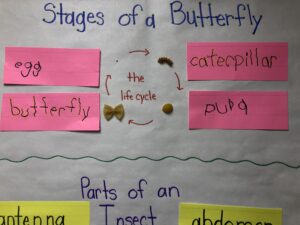 Don’t let the lesson end when story time is over! Engage your students throughout the day by planning activities that encourage them to utilize the language they learned from the book. Let’s say you just read “The Very Hungry Caterpillar.” You can support that story – and build world knowledge – by planning activities that tie back into your anchor book. Keep the momentum going by engaging in some hands-on activities or conversations that tie in the focus vocabulary words or main idea of the story.
Don’t let the lesson end when story time is over! Engage your students throughout the day by planning activities that encourage them to utilize the language they learned from the book. Let’s say you just read “The Very Hungry Caterpillar.” You can support that story – and build world knowledge – by planning activities that tie back into your anchor book. Keep the momentum going by engaging in some hands-on activities or conversations that tie in the focus vocabulary words or main idea of the story.
When In Doubt, START From the Beginning
Transform story time into the ultimate learning experience with the START strategy. Each part of the strategy plays a key role in how your students understand the main idea. In our Transforming Story Time course, you’ll learn some simple ways to incorporate these purposeful tips while reading the next story to your students!
S: State the title and author, along with the purpose for reading the story
T: Teach information with focus vocabulary, key events or the characters’ thoughts and feelings
A: Ask an open-ended question at the end of the story (usually beginning with “why” or “how”)
R: Respond to children when they answer the question at the end of the read and lead them toward thoughtful answers while lifting language.
T: Tie everything together by connecting or relating the main idea to the children’s world.
Watch to learn more:
Recommended Resources for Reading with Children:
- Using Questions Effectively
- 101 Tier 2 Words in English and Spanish
- Transforming Story Time Course
- Building Vocabulary Teaching Aid
- Reading With Children
- PAT Poster
- START Ladder Safety Nets
- START Poster
- Tuning In and Responsive Teaching for START Teaching Aid
- Preschool & Pre-K Story Guides
- START Planning Template
- Rollins Rhymes Collection
- Story Book Extension Activities
The Cox Campus is committed to ensuring literacy and justice for all. Through impactful strategies and learning experiences, families, educators, and anyone who works with children can make a difference by bringing the science of reading within reach for each child.
